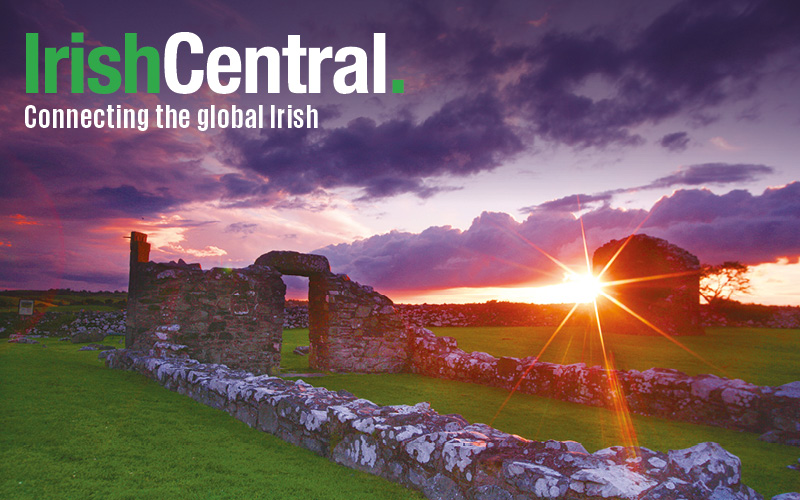My great-uncle fought alongside Cathal Bruagh and Eamonn Ceannt.
My great-uncle James Glynn was born in 1893 at Rialto cottages in the shadow of two great institutions - The South Dublin Union now St James’ Hospital, the largest and most notorious workhouse in Ireland and The Guinness brewery, the largest brewery site in the world.
Both buildings loomed large both literally and psychologically for the inhabitants of Rialto cottages and for James both institutions would exert a huge influence on the trajectory of his young life. He would, like his father be employed by the giant brewery working largely under protestant loyalist overseers and in 1916 he would, along with 150 other brave men and women take up arms and stand against the tyranny of the British empire at the South Dublin Union.
The S.D.U was a sprawling complex of buildings; hospitals and workhouses covering an area of over 50 acres and in 1916 was home to 3200 inmates; categorized as infirm, destitute or insane.
Read more: Rod Stewart's rousing rendition of Irish rebel ballad Grace
The S.D.U origins stem from an act of parliament implemented in 1703 which led to the construction of a workhouse, and some 25 years later, a foundling hospital was added to the site. The Hospital far from being a refuge for abandoned children was to turn into a horrific charnel house where infanticide was routinely practiced; babies have often deposited anonymously at one of the gates where a child could be left in a basket which was fixed to a revolving door, then collected following a summoning pull of the porter's bell.
The grim statistics speak for themselves; between 1791-1796 a total of 5,126 infants were admitted to the infirmary – only one survived!
Of the 540 children received in March of 1795 by the Hospital itself 440 died!
At the time of the rising St James’ gate was by far the largest employer in Dublin employing thousands of workers. Guinness’s had a reputation for being pro-Unionist; The founder of the Company in 1759 Arthur Guinness was an ardent Unionist and opponent of Irish Nationalism and was strongly suspected of being a British spy by the United Irishmen. Arthur’s descendant Lord Iveagh would infamously donate £10,000 to the UVF arms fund in 1913 a massive sum at the time equivalent to about £1,000,000.
1916 was not a good time for a revolution a quarter of a million Irishmen were fighting for Britain including my Paternal Grandfather.
Read more: How the Catholic church misjudged the Easter Rising
Loyalties were split with many families dependant on British army wage packets resulting in volunteers being abused and spat at by their own people.
The ranks of the Volunteers were made up of working men; Idealists, Philosophers, Poets and Romantics and on that fateful Easter Monday the 24th of April, James, along with 65 incredibly brave men of the 4th Dublin battalion would under their Commandant Eamonn Ceannt and Vice commandant Cathal Brugha take possession of the Nurses’ home establishing their HQ under a flag of green.
The Battalion was woefully under strength. Confusion around the call to arms would result in a depleted turnout and worse still their arsenal consisted of old German Mauser rifles, a few old British and Italian rifles, some pistols, shotguns, crowbars, sledgehammers, and even pikes! The Volunteers would immediately draw attention from the Royal Irish Regiment and fierce fighting would erupt with heavy casualties on both sides including civilian inmates of the hospital who along with hundreds of patients and medical staff had not been evacuated. Despite the British soldier's initial success in managing to retake some of the buildings. The order was given to return to barracks.
The S.D.U was situated in South West of the city strategically positioned between Richmond barracks and the city center. A high stone wall ringed the complex.
At 14.15 on Thursday the 27th April, a British convoy, led by Lieut. Colonel Oates of the Nottingham and Derbyshire Regiment was known as the Sherwood Foresters, carrying ammunition to the Royal Hospital Kilmainham, which came under fire at Rialto bridge. Rapid-fire was quickly returned in the direction of the S.D.U. followed by the order from Colonel Oates to clear the complex of snipers and occupy as much of the area as possible “ with a view to distracting the enemy’s attention whilst the transport crossed the bridge” 100 of the Foresters entered the grounds of the S.D.U and moved towards the Nurses’ home. Undercover of machine-gun fire the Foresters attempted a frontal assault which was repulsed by a barrage of heavy fire causing them to retreat. The next attack came via the adjoining buildings with the soldiers digging their way through a wall into the Nurses’ home where they were met with a devastating blast of rifle fire. Hand to hand fighting ensued with the British using hand grenades. Cathal Brugha would sustain “catastrophic injuries”; shrapnel and gunshot wounds which would ultimately save him from execution.
Within 48 hours it would all be over - The hopes of an Irish Republic dashed. James would survive and along with several of his fellow combatants he would be briefly interred in Kilmainham jail before being transported by ship to Wales and Frongoch prison where unfortunately he would contract tuberculosis. This, however, would not curtail his revolutionary activities as following his release in August of 1916 James would re-join the volunteers before joining the National forces in 1922 where alongside his brother, my Grandfather John Glynn, he would serve until 1924 finally succumbing to the disease which would render him unfit for military service.
Read more: The Easter Rising and a day at the races for my Irish grandfather
This article was submitted to the IrishCentral contributors network by a member of the global Irish community. To become an IrishCentral contributor click here.




Comments